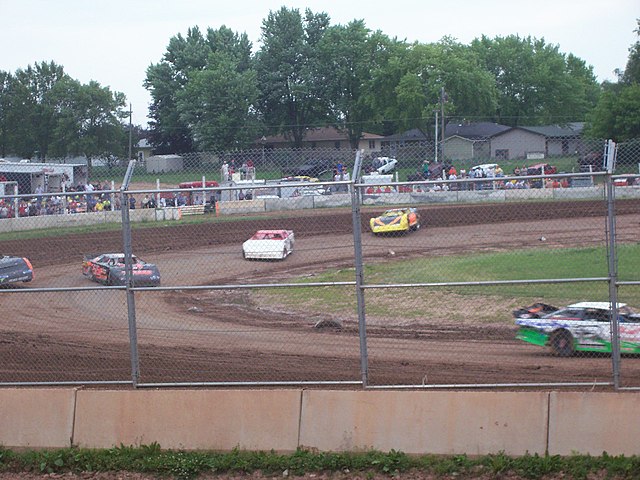Dirt track racing is a form of motorsport held on clay or dirt surfaced oval race tracks often used for thoroughbred horse racing. Dirt track racing started in the United States before World War I and became widespread during the 1920s and 1930s using both automobiles and motorcycles. Two different types of race cars dominate — open wheel racers in the Northeast and West and stock cars in the Midwest and South. While open wheel race cars are purpose-built racing vehicles, stock cars can be either purpose-built race cars or street vehicles that have been modified to varying degrees. There are hundreds of local and regional racetracks throughout the nation. The sport is also popular in Australia, New Zealand, Canada, South Africa and the United Kingdom.
Late Model drivers show how dirt track car drivers slide their car's back end first through a corner. The multiple cars show also the many different angles that occur whilst driving through the corners.
A typical dirt track "street stock" car racing in Wisconsin
Dirt sprint cars
IMCA Modified car
Sprint cars are high-powered open-wheel race cars, designed primarily for the purpose of running on short oval or circular dirt or paved tracks. Historically known simply as "big cars," distinguishing them from "midget cars," sprint car racing is popular primarily in the United States and Canada, as well as in Australia, New Zealand, and South Africa.
Dave Darland racing at Kokomo Speedway in 2007
Daryn Pittman's 2013 World of Outlaws winged sprint car
World of Outlaws drivers make a four-abreast lap at the Knoxville Raceway
Midget sprint car







